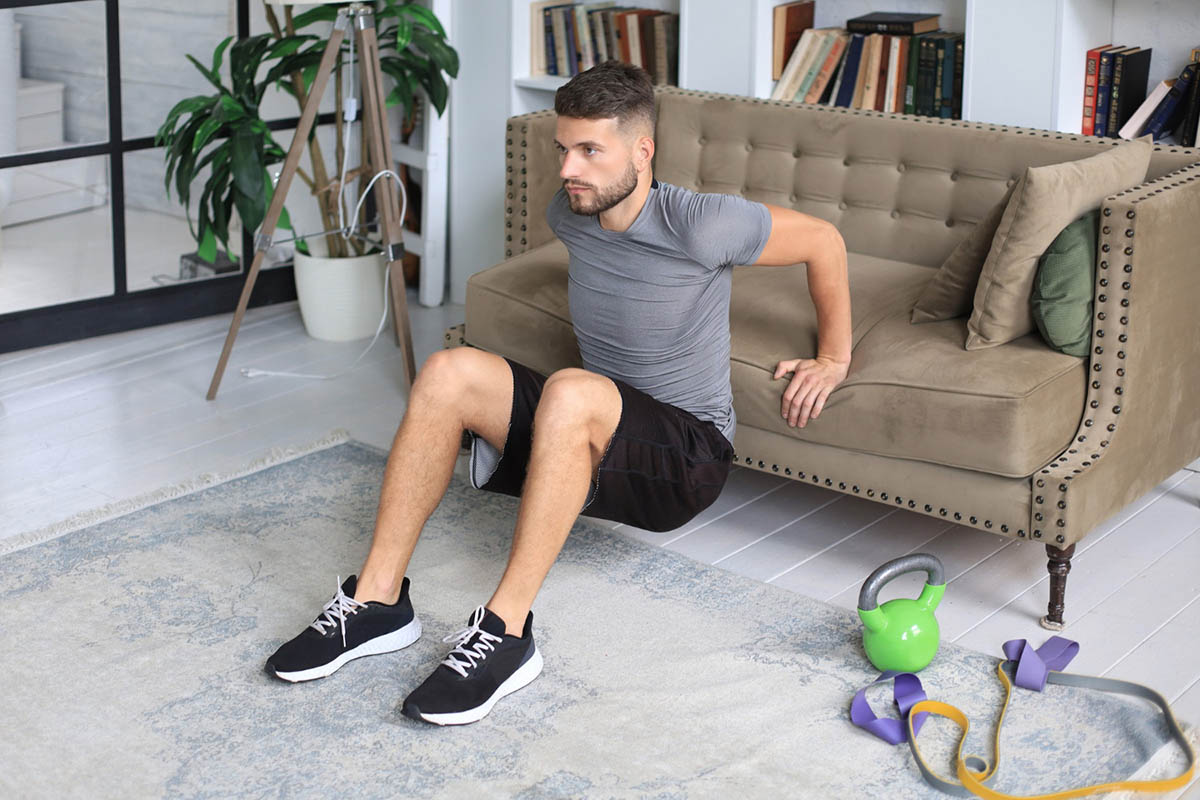
Introduction
Maintaining a healthy bladder is crucial for overall well-being and quality of life. Your bladder plays a significant role in your urinary system, and keeping it in good shape can prevent discomfort and more serious health issues such as urinary incontinence and bladder infections. In this blog, we will explore the anatomy of the bladder, common health issues, dietary tips, exercises, and when to seek medical help. By following these guidelines, you can learn how to keep your bladder healthy and functioning at its best.
Understanding Your Bladder
Basic Anatomy and Function of the Bladder
The bladder is a hollow, muscular organ that stores urine from the kidneys before it is excreted from the body. Understanding its structure can help you better appreciate how it functions and what you can do to keep it healthy.
Structure of the Bladder
- The Detrusor Muscle: This muscle forms the bladder wall and contracts to expel urine. Strong detrusor muscles are essential for healthy bladder function and effective bladder control.
- The Urethra: The tube through which urine exits the body. Keeping the urethra free of infection is vital for avoiding bladder infections and maintaining normal bladder function.
- Ureters: These are tubes that carry urine from the kidneys to the bladder. Proper functioning of the ureters ensures the smooth flow of urine into the bladder.
- Trigone: A triangular area at the base of the bladder where the ureters enter and the urethra exits. This area is critical for the coordination of bladder emptying.
Common Bladder Health Issues and Their Symptoms
Bladder conditions are prevalent worldwide, with significant portions of the population experiencing symptoms. In 2008, it was estimated that over 45% of the global population aged 20 and above (around 1.9 billion people) were affected by Lower Urinary Tract Symptoms (LUTS). Additionally, approximately 8.2% (348 million) of the population were estimated to suffer from Urinary Incontinence (UI), including 3.2% with stress UI, 1.2% with urgency UI, 1.3% with mixed UI, and 2.5% with UI without symptoms of stress or urgency.
In a comprehensive study of bladder health among American women, significant variability in bladder health was observed over time. Only a small fraction (6.5%) maintained optimal bladder health over five years, though a notable percentage showed improvement (28.7%). Meanwhile, 31.4% of women maintained their bladder health status, and 33.6% experienced a decline, including 10.4% who transitioned from optimal to less-than-optimal bladder health.
Bladder health issues can range from minor infections to serious conditions like cancer. Recognizing the symptoms early can lead to timely treatment and better outcomes.
Urinary Tract Infections (UTIs)
Symptoms of UTIs include a strong, persistent urge to urinate, a burning sensation during urination, cloudy or strong-smelling urine, and pelvic pain. UTIs are a common cause of bladder dysfunction and can lead to significant discomfort if not treated promptly.
Overactive Bladder (OAB)
OAB is characterized by a sudden, uncontrollable urge to urinate, frequent urination, and nocturia (waking up to urinate at night). Managing OAB is essential to prevent bladder damage and improve quality of life.
Interstitial Cystitis (Painful Bladder Syndrome)
This chronic condition causes bladder pressure, bladder pain, and sometimes pelvic pain. Symptoms include a frequent need to urinate, urgency, and pain during intercourse. Interstitial cystitis can significantly impact bladder control and overall well-being.
Bladder Cancer
Symptoms can include blood in the urine, frequent urination, painful urination, and back or pelvic pain. Early detection of bladder cancer is crucial for effective treatment and improving survival rates.
Dietary Tips for Bladder Health

Foods and Drinks to Promote Bladder Health
A healthy diet is essential for maintaining bladder health. Incorporating the right foods for a healthy bladder can support organ function and prevent issues.
- Cranberries: Known for preventing UTIs, cranberries can help maintain a healthy bladder by preventing bacteria from adhering to the bladder wall.
- Water: Drinking plenty of water is essential for staying hydrated and helping to flush out toxins from the bladder and urinary tract.
- Fiber-rich foods: Foods high in fiber can prevent constipation, which can affect bladder function and lead to urinary incontinence. Examples include fruits, vegetables, and whole grains.
- Probiotic-rich foods: These foods promote a healthy balance of bacteria in the digestive tract and urinary system, supporting overall bladder health.
Foods and Drinks to Avoid or Consume in Moderation
Certain foods and drinks can act as bladder irritants and should be avoided or consumed in moderation to maintain a healthy bladder.
- Caffeine: Found in coffee, tea, and some sodas, caffeine can irritate the bladder and increase the urgency and frequency of urination.
- Alcohol: Alcohol can have a diuretic effect, leading to frequent urination and potentially causing bladder control issues.
- Acidic and spicy foods: These can irritate the bladder lining and exacerbate symptoms of bladder conditions like interstitial cystitis.
- Artificial sweeteners: Some people find that artificial sweeteners can irritate their bladder and lead to urinary symptoms.
Understanding how to have a healthy bladder involves making mindful dietary choices. By avoiding or moderating these irritants, you can reduce the risk of bladder issues and promote overall bladder health.
The Role of Hydration in Maintaining Bladder Health
Staying hydrated is essential for bladder health. Drinking enough water helps dilute urine, which can prevent the formation of bladder stones and reduce the risk of UTIs. It also helps ensure normal bladder function and supports the entire urinary system.
Impact of Smoking on Bladder Health and Benefits of Quitting
Smoking is a major risk factor for bladder cancer. Quitting smoking can significantly reduce your risk and improve overall bladder health. Smoking can also damage the bladder nerves and muscles, leading to poor bladder health and bladder control issues.
Importance of Managing Stress for Bladder Function
Stress can exacerbate bladder issues like OAB and interstitial cystitis. Managing stress through techniques like meditation, deep breathing, and regular physical activity can improve bladder function and reduce symptoms of stress incontinence.
Weight Management and Its Connection to Bladder Health
Excess weight can put pressure on the bladder and pelvic organs, leading to issues like urinary incontinence. Maintaining a healthy weight through a balanced diet and regular exercise can support bladder health and improve bladder control.
Exercises for Bladder Strength
Pelvic Floor Exercises (Kegels)
Kegels are exercises that strengthen the pelvic floor muscles, which support the bladder and help control urination.
- How to perform Kegel exercises: Identify your pelvic floor muscles by stopping urination midstream. Once you know how to contract these muscles, tighten them for a count of three, then relax for a count of three. Repeat this cycle 10-15 times, three times a day. Pelvic floor muscle training can improve bladder control and reduce urine leakage.
Regular, Moderate Exercise
Moderate exercise can improve overall health and support bladder function. Physical activity helps maintain a healthy weight and reduces the risk of bladder dysfunction.
Types of Moderate Exercises
- Walking or jogging: Improves cardiovascular health and supports bladder function without putting too much strain on the bladder.
- Light cycling: Enhances fitness and can be a low-impact way to exercise for those with bladder conditions.
- Water aerobics: Gentle on the joints and effective for overall fitness, water aerobics can also support healthy bladder function.
- Simple yoga poses or pilates: Strengthen the core and pelvic floor muscles, which can enhance bladder control and reduce the risk of bladder dysfunction.
Techniques for Proper Urination Habits
Proper urination habits can prevent bladder issues and support healthy bladder function.
Key Techniques
- Scheduled bathroom visits: Going to the bathroom at regular intervals can prevent the bladder from becoming too full, reducing the risk of bladder damage.
- Double voiding: Emptying the bladder twice can help ensure it is completely empty, which can prevent urinary tract infections and improve bladder health.
- Proper position: Sitting comfortably on the toilet and leaning forward can help empty the bladder more effectively.
- Relaxation: Relaxing the muscles can make urination easier and reduce the risk of bladder dysfunction.
When to Seek Medical Help

If you experience symptoms like blood in the urine, persistent pain, frequent UTIs, or other abnormal bladder symptoms, it’s important to seek medical help from a health care provider. Early diagnosis and treatment can prevent complications and ensure better management of urologic conditions.
Discover How Wildhawk Physical Therapy Can Enhance Your Bladder Health
At WildHawk Physical Therapy, we specialize in providing expert care to help you achieve optimal bladder health. Our tailored pelvic floor physical therapy programs are designed to strengthen your pelvic floor muscles, enhance bladder control, and reduce symptoms of urinary incontinence. We understand the challenges of maintaining pelvic health in a hectic schedule, and our dedicated team is committed to delivering personalized treatments that fit seamlessly into your busy life. Trust WildHawk Physical Therapy to support your journey towards a healthier bladder and a better quality of life.
Conclusion
Maintaining a healthy bladder involves a combination of good dietary choices, regular exercise, and proper urination habits. By following these tips and seeking medical help when needed, you can ensure your bladder remains healthy and functional. Keeping a bladder diary can also help track symptoms and identify bladder irritants, contributing to better bladder health management.
FAQs
What food kills bacteria in the bladder?
Cranberries are known to help kill bacteria in the bladder and prevent UTIs. They contain compounds that prevent bacteria from sticking to the bladder wall, reducing the risk of infection.
How do I know if my bladder is OK?
Signs of a healthy bladder include normal urination frequency, absence of pain, clear urine without blood, and no symptoms of bladder infection or urinary incontinence. Maintaining healthy bladder habits and monitoring any changes can help ensure normal bladder function.
What are the five symptoms of bacteria in urine?
The five symptoms of bacteria in urine include a strong urge to urinate, a burning sensation during urination, cloudy urine, strong-smelling urine, and pelvic pain. These symptoms indicate a bladder infection and should be evaluated by a health care provider to prevent further complications.









